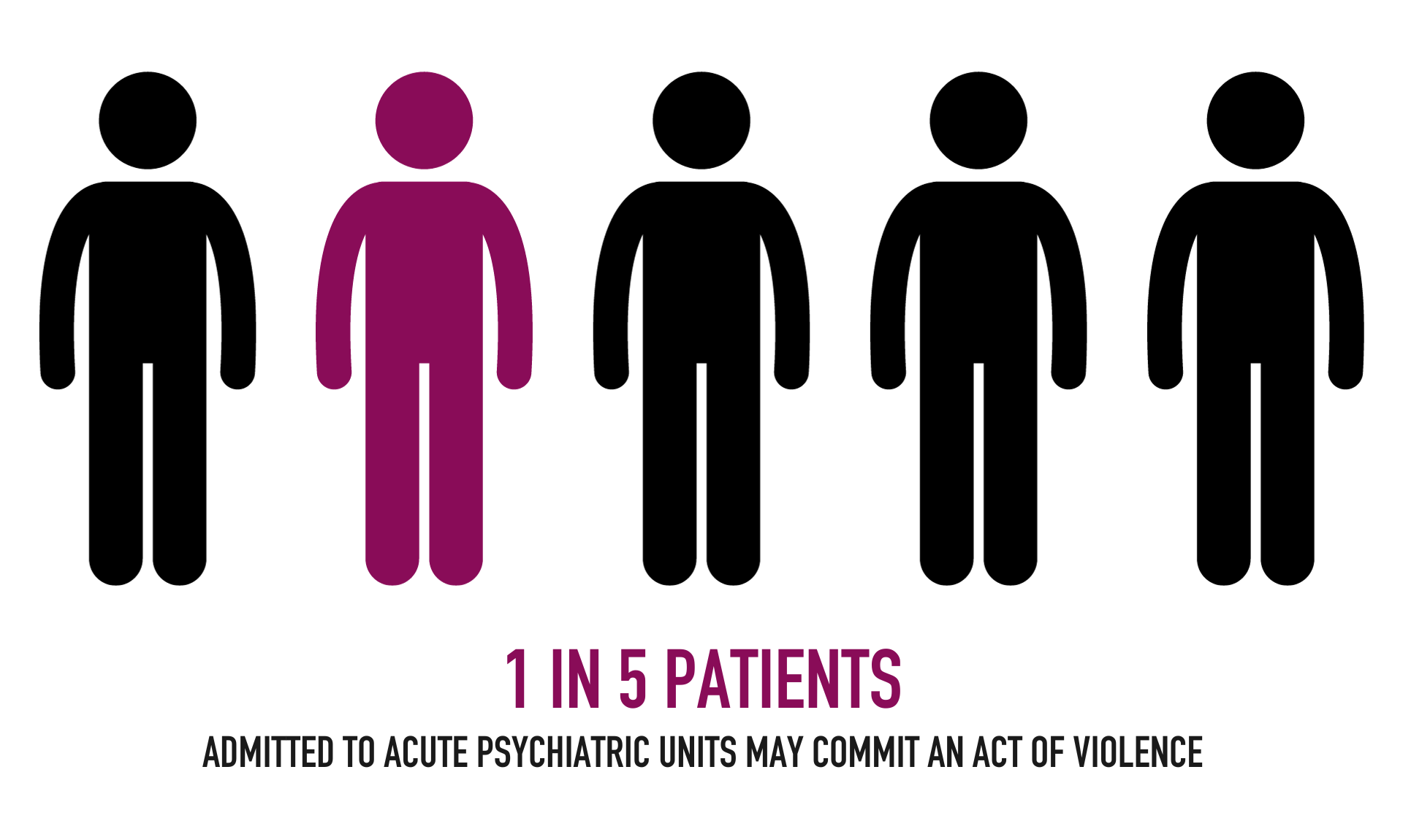“For someone in the midst of a mental health crisis, a door can be the difference between life and death — and between feeling human or feeling forgotten.”
When was the last time you felt truly safe in a space — and also trusted as a person? At home, at work? For many experiencing a mental health crisis, these two feelings don’t always coexist.
In behavioral health facilities, every detail — from the handles and locks to the layout of a room — can influence whether someone feels protected or punished. That’s the challenge: how do we keep people safe during their most vulnerable moments without making them feel like they’ve lost their dignity?
The Tension Between Safety and Dignity
In traditional behavioral health facilities, safety has often come at the expense of personal respect. Upon admission, it’s still common for patients to be asked to give up personal items and wear hospital-issued clothing. Belts, shoelaces, drawstrings — anything that could be used for self-harm — are removed “for safety.”
But the impact can be profound. One patient described feeling “stripped and ashamed” after her clothes were taken away. The intent was to prevent harm, but the result was a loss of autonomy and identity at a moment of crisis.
It raises an important question: can someone truly heal in an environment that prioritizes physical safety but undermines emotional safety?
The World Health Organization defines patient safety as minimizing harm — and that includes emotional harm. When policies cause humiliation or restrict freedom without clear benefit, they create harm of their own. Some experts call this iatrogenic harm — damage caused by the very system intended to help.
The ripple effects are significant. Patients who feel disrespected are less likely to engage in treatment, and staff enforcing rigid rules often feel conflicted, wishing they could provide comfort instead of control. The painful irony is that measures designed to protect can sometimes make life feel less worth living.
The good news: we’re learning how to resolve this tension.
Designing a Better Balance: Safety With Compassion
The question driving today’s designers and clinicians is: Why not both? Why can’t a behavioral health environment be safe and welcoming?
The answer lies in innovation, human-centered design, and co-production with the very people who use these spaces.
Why Doors Are at the Center of the Challenge
Doors remain one of the greatest safety challenges in behavioral health facilities. Research shows:
- More than half of inpatient suicides involve a door or its hardware.
- Most occur in bedrooms or bathrooms, where privacy is essential but risk is highest.
It also states that around 80% of in-patient suicides are by hanging or strangulation.
90% of these hangings involve a low-level ligature point (anything below head height), often a door handle, hinge, or frame. It’s not just the top of the door that poses risk; it’s every part of it.
Two hard surfaces meeting, for example frame and leaf, can create a ligature point. Removing doors isn’t an option — they’re essential for fire safety, privacy, and dignity. The question becomes: How do we design a door that manages risk without erasing humanity?

One U.K. behavioral health provider recently faced this challenge with bathroom doors. As their director explained: “You want to create an environment where patients feel safe and protected in the bathroom. But without the right solution, privacy can come at the expense of safety.”
Their answer was ligature-resistant en-suite doors designed to break away under load. Since installation:
- Ligature risks in bathrooms dropped to zero.
- Patients reported feeling safer and more respected.
- Staff noted reduced anxiety and greater engagement in recovery.
In short: safety improved, dignity was preserved, and the entire environment calmed down.
As one associate director concluded: “We have managed to reduce ligature incidents to zero. You can’t get much safer than that.”
Safety and Dignity in Design
Modern anti-ligature door systems show how safety and dignity can go hand in hand. Every hinge, handle, and frame is designed to eliminate risks, yet the finished product feels warm and familiar, not institutional.
That intentionality matters. A well-designed door should blend into its surroundings, not broadcast itself as a safety device. The goal is a therapeutic environment that feels as close to everyday life as possible — safe and psychologically reassuring.
This philosophy extends across all aspects of behavioral health design: furnishings that look like home but are durable, fixtures that minimize risk without being obvious, layouts that give privacy without isolating.
.png?width=940&height=550&name=En-Suite%20US%20Graphic%20(6).png)
Human Stories, Real Impact
What does it feel like to walk into a behavioral health unit built on these principles? It feels, in a word, hopeful.
Picture James, a patient returning from therapy. In the past, he might have been met with sterile hallways and locked, institutional doors. Instead, his room now feels private, safe, and homelike. He can take a shower in his en-suite bathroom without staff hovering outside, yet he knows help is available if needed. He can gather in a common space that feels more like a living room than a ward.
“When I saw that I could lock my own door, that you trusted me that much, I felt safer.” — James, Patient
These small details matter. They tell James: you are cared for here, not just managed. And that shift can make all the difference in recovery.
Staff feel it too. With fewer crises and less surveillance, they can focus on care, not control. Visitors notice as well — seeing loved ones in a healing environment gives them hope, making visits more frequent and meaningful.

Toward Hopeful, Healing Environments
The future of behavioral health design is built on a new understanding: safety and dignity aren’t opposing forces. They’re equal pillars of care.
That means asking new questions. Instead of: “How do we make sure nobody can hurt themselves here?” the question becomes: “How do we design a space that encourages well-being, minimizes harm, and feels like a place to live?”
The answers include:
- Soft furnishings and calming colors.
- Natural light and outdoor access.
- Fixtures designed for safety but not visibly institutional.
- Private spaces where patients can retreat without feeling isolated.
- Layouts that allow discreet observation without making patients feel watched.
Each detail reinforces the same message: You still have choices. You still have a life to live. And we’re here to help you get back to it.
And the data backs it up. Facilities that embrace this philosophy report fewer suicide attempts, fewer restraints, shorter hospital stays, reduced staff burnout, and greater satisfaction for both patients and caregivers.

It’s Not About Doors
At the end of the day, this isn’t really about doors, hardware, or even architecture. It’s about people.
It’s about treating patients in crisis as individuals to be respected, not problems to be managed. It’s about empowering staff to provide compassionate care, not act as security guards.
Good design in behavioral health must start with the human experience. When it does, safety follows naturally.
Join the Conversation
At Safehinge Primera, our purpose is clear: We help protect people through vulnerable times.
That mission drives us to keep innovating and advocating for environments where safety and dignity walk side by side. But we know we don’t have all the answers — and we don’t want to design in isolation.
Whether you’re a clinician, designer, caregiver, or someone with lived experience, your perspective matters. Together, we can shape the future of behavioral health design.
Connect with our team, share your stories, or explore our latest solutions. We’re listening — and our doors are always open.




